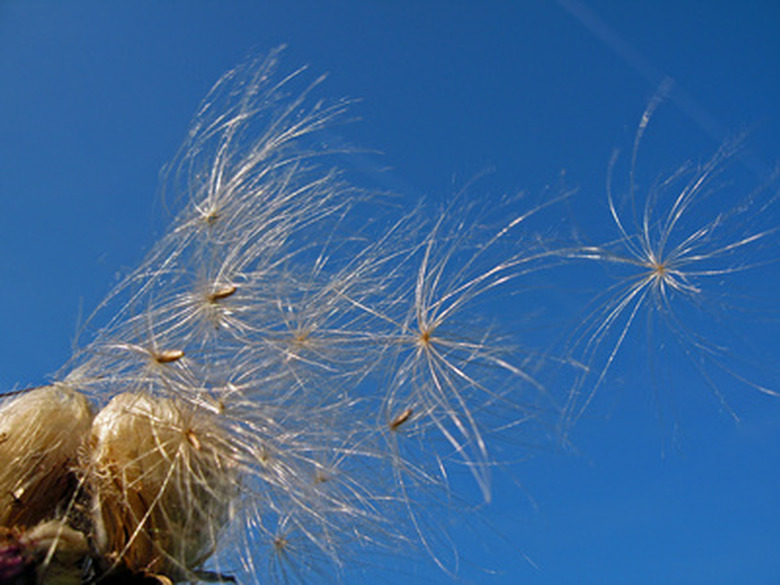What Is The Function Of Seeds And Spores In Plants?
Seeds and spores allow plants to reproduce. When a seed or a spore falls to the ground and conditions are right, it will grow into a new adult plant. However, seeds and spores are not the same thing. Not only do plants differ with respect to their reproductive methods, seeds and spores also represent important steps along the evolution of the plant kingdom that exemplify how plants have adapted to life on land.
Features
A single seed or spore has the potential to mature into a plant, requiring only suitable growing conditions to germinate. Spores and seeds differ primarily in the number of chromosomes that each contains. While the embryonic plant inside a seed contains the full number of chromosomes, a spore contains only half. According to biology professor John W. Kimball, the structure that develops from the spore will produce the sex cells that result in an adult plant with a complete set of chromosomes.
- Seeds and spores allow plants to reproduce.
- According to biology professor John W. Kimball, the structure that develops from the spore will produce the sex cells that result in an adult plant with a complete set of chromosomes.
Types
Plants differ in whether they reproduce with spores or seeds. Older, more primitive plants such as mosses and ferns rely on spores. More recently evolved plants, including flowering plants, produce seeds.
History
This difference in plant types illustrates an important development in the evolution of plants. According to Stephen P. Broker of Yale University, plants originated in the water and, therefore, developed reproductive mechanisms that rely on water. Once spores develop, they need water to conduct the sex cells they produce to each other. As plants evolved, later developments freed plants from dependence on water. Male and female structures replaced the spores, and from them, seeds developed.
- Plants differ in whether they reproduce with spores or seeds.
- According to Stephen P. Broker of Yale University, plants originated in the water and, therefore, developed reproductive mechanisms that rely on water.
Spores
Mosses and ferns develop spores when cells containing a full set of chromosomes divide in half, halving the number of chromosomes as well. The resulting cells are called spores, and they carry on the wind to a new site. If conditions are right, the spores will develop into a structure where all cells also contain a half-set of chromosomes. These structures produce egg and sperm cells that, when carried to each other by water and united, form a plant with a full set of chromosomes, capable of producing spores.
The cycle begins again. Spore-producing plants rely on large numbers of spores for reproductive success. According to the American Fern Society, a fern may produce millions of spores, from which only one successfully develops.
- Mosses and ferns develop spores when cells containing a full set of chromosomes divide in half, halving the number of chromosomes as well.
- These structures produce egg and sperm cells that, when carried to each other by water and united, form a plant with a full set of chromosomes, capable of producing spores.
Seeds
Seeds result from sexual reproduction between plants and offer several reproductive advantages to seed-bearing plants. Seeds include a protective covering that encloses the embryonic plant. They also contain a nutritive substance that sustains the young plant in its first days of life, a feature that spores lack. Because of these advantages, seed plants can produce only a few seeds and still be relatively assured of reproductive success.
